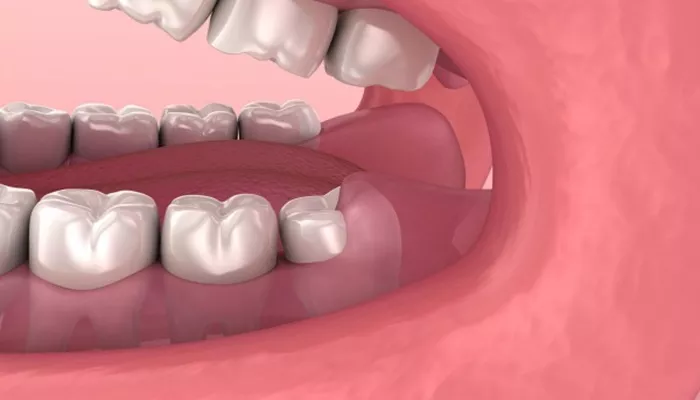Molars are large, flat teeth located at the back of your mouth. They play a crucial role in chewing and grinding food. When molars begin to grow, especially during late childhood or early adulthood, many people experience discomfort or pain. This pain can be mild, moderate, or even severe in some cases. Understanding why molars hurt during growth is essential for managing symptoms and maintaining good oral health.
When Do Molars Usually Grow?
Most people develop their first set of molars around age 6. These are called the “six-year molars.” The second set usually appears around age 12, commonly known as the “12-year molars.” The third and final set of molars, often called wisdom teeth, generally emerges between ages 17 and 25.
The discomfort associated with growing molars often occurs during the eruption of these teeth, particularly wisdom teeth.
The gums must stretch and open to allow the teeth to emerge, which can result in swelling, inflammation, and pain.
Causes of Pain When Molars Grow
Gum Inflammation and Swelling
One of the primary causes of molar pain is inflammation of the gums. As the tooth breaks through the gum tissue, it can irritate the area. This inflammation often results in swelling, tenderness, and a throbbing sensation.
Impacted Molars
Sometimes, molars do not have enough room to grow properly. When this happens, the molar may become impacted. This means the tooth is stuck beneath the gum line or only partially erupts. Impacted molars, particularly wisdom teeth, can cause severe pain and may lead to complications such as infection or cysts.
Pressure on Surrounding Teeth
As molars grow, they can put pressure on nearby teeth. This added pressure may lead to crowding, shifting, or misalignment. The stress on surrounding teeth and the jawbone can also contribute to overall discomfort.
Signs and Symptoms of Growing Molar Pain
Growing molars can cause a range of symptoms, including:
- Red or swollen gums
- Tenderness or sensitivity around the area
- Difficulty chewing
- Jaw pain
- Earaches or headaches
- Bleeding gums
If any of these symptoms persist or worsen, it is important to consult a dental professional to rule out complications like gum disease or infection.
Bleeding Gums and Growing Molars
Bleeding gums can occur during molar eruption. This happens when the gum tissue is damaged or inflamed. Bleeding may be mild and temporary, but it should not be ignored. Persistent bleeding can be a sign of other dental issues like gingivitis or periodontal disease.
How Gum Disease Can Affect Molar Growth
When bacteria build up along the gum line, it can lead to gum disease. This condition ranges from mild gingivitis to more severe periodontitis. Gum disease can make the process of molar eruption more painful and prolonged. It can also lead to other symptoms such as bleeding, bad breath, and gum recession.
Maintaining good oral hygiene is key to preventing gum disease. This includes brushing twice daily, flossing, and using mouthwash to control plaque buildup.
Wisdom Teeth and Severe Pain
Wisdom teeth are the last molars to emerge, and they are often the most problematic. Because they typically appear in early adulthood, the jaw may not have enough space to accommodate them. This can lead to:
- Impaction
- Infection
- Swelling
- Jaw stiffness
Many people eventually need to have their wisdom teeth removed due to pain or crowding. This is a common and safe procedure performed by dental professionals.
Diagnosing the Source of Molar Pain
If you’re experiencing molar pain, a visit to the dentist is essential. The dentist will examine your mouth and may take X-rays to determine the cause of the pain. This helps identify problems such as impaction, infection, or abnormal tooth positioning.
Effective Treatments for Molar Pain
Treatment for molar pain depends on the underlying cause. Common options include:
- Over-the-counter pain relievers like ibuprofen or acetaminophen
- Saltwater rinses to reduce inflammation
- Cold compresses to minimize swelling
- Topical gels for gum numbing
In more serious cases, the dentist may recommend antibiotics for infection or a minor surgical procedure to remove an impacted tooth.
Home Remedies for Temporary Relief
There are also several home remedies that may help reduce pain:
- Clove oil applied to the gums for natural numbing
- Rinsing with warm salt water
- Ice packs applied to the jaw
- Soft foods to reduce pressure on the teeth
While home remedies can offer short-term relief, they should not replace professional dental care.
Preventive Dental Care
Preventing molar pain involves regular dental care and checkups. Here are some tips:
- Brush and floss daily
- Use fluoride toothpaste
- Visit your dentist twice a year
- Address dental pain promptly
These practices help reduce the risk of cavities, gum disease, and other issues that can complicate molar growth.
When to See a Dentist
You should consult a dentist if you experience:
- Severe or persistent pain
- Swelling that does not go away
- Pus or bad taste in the mouth
- Difficulty opening your mouth
Early intervention can prevent more serious problems and may reduce the need for invasive treatments.
Conclusion
Molar pain during growth is common, but it does not have to disrupt your life. Knowing the causes—such as inflammation, impaction, and gum disease—can help you manage symptoms effectively. Regular dental care, good oral hygiene, and timely treatment are essential for keeping your smile healthy and pain-free.

